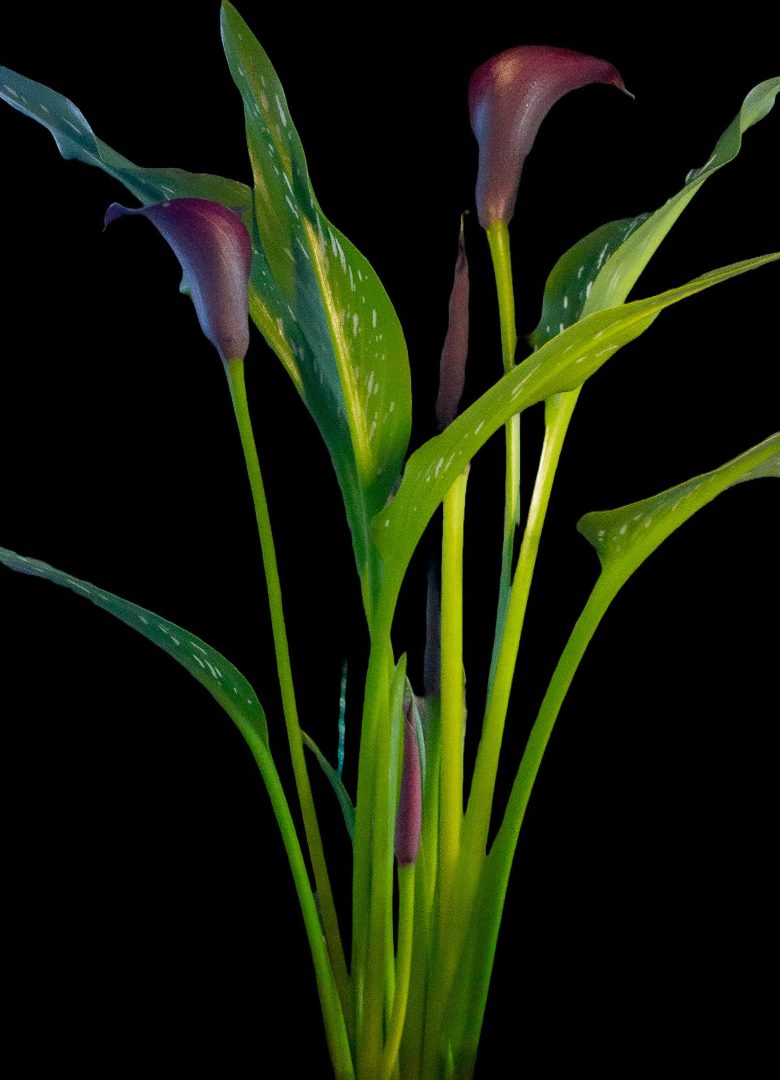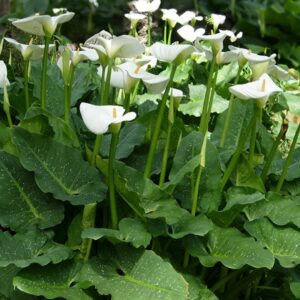Your cart is currently empty!
Comprehensive Guide to Caring for Calla and Arum Lilies

Introduction
Calla lilies (Zantedeschia spp.) and Arum lilies (Zantedeschia aethiopica) are celebrated for their elegant and striking blooms. Proper care is essential to ensure these plants thrive and bring continuous beauty to your garden. This comprehensive guide covers all aspects of caring for Calla and Arum lilies, incorporating the best practices from various expert sources.
Planting Calla and Arum Lilies
Selecting the Right Location
Both Calla and Arum lilies thrive in locations that offer partial shade to full sun. However, in hotter climates, some afternoon shade can help prevent the foliage from scorching.
- Soil Requirements: These lilies prefer well-drained, fertile soil rich in organic matter. Consistent moisture is crucial, but the soil should not be waterlogged.
- Planting Depth: Plant the rhizomes about 5 cm deep. Space the bulbs 30 to 40 cm apart to allow adequate room for growth and air circulation.
Planting Season
The best time to plant Calla and Arum lily bulbs is in the spring, after the risk of frost has passed. This timing ensures that the soil is warm enough for the bulbs to start growing.
Watering and Irrigation
Consistent watering is essential, especially during the vegetative growth phase. Here’s how to manage watering:
- Regular Watering: Keep the soil consistently moist, but avoid waterlogging. Arum lilies, in particular, thrive in moist environments.
- Irrigation Systems: Use drip and overhead irrigation systems to maintain soil moisture levels. Reduce watering as the plant enters senescence to prepare it for dormancy.
Fertilization
Proper fertilization supports robust growth and vibrant blooms:
- Active Growth Phase: Apply a high-nitrogen fertilizer every two weeks during the active growth phase. This promotes lush, green foliage and robust growth.
- Flowering Phase: Stop applying high-nitrogen fertilizers during flowering. Instead, switch to a high-potassium fertilizer once a week after flowering begins to support flower longevity.
- Slow-Release Fertilizers: Use a slow-release fertilizer with a balanced NPK ratio, such as 3:1:5, in spring and again in summer to provide a steady supply of nutrients over time.
Pest and Disease Management
Common Pests
- Thrips and Aphids: These pests are common and can cause significant damage. Implement a preventative spray program during the flowering phase and use insecticidal soaps or chemical treatments as necessary.
- Larger Pests: Use physical barriers or deterrents to protect the plants from larger pests such as porcupines, wild pigs, and birds.
Diseases
Arum and Calla lilies are susceptible to various diseases, including:
- Rots: These plants are prone to crown rot, root rot, and pythium rot. Ensure well-drained soil and avoid overwatering to prevent these diseases.
- Fungal Infections: Regularly remove dead and decaying debris to reduce the risk of powdery mildew, gray mold, and blight.
Pruning and Deadheading
- Deadheading: Remove spent blooms to encourage new growth and prevent the plant from expending energy on seed production.
- Pruning: Trim back dead or yellowing foliage to maintain the plant’s health and appearance.
Overwintering
In colder climates, special care is needed to protect Calla and Arum lilies during the winter months:
- Mulching: Apply a thick layer of mulch around the base of the plants to protect the rhizomes from frost.
- Lifting Rhizomes: In regions with severe winters, consider lifting the rhizomes from the ground. Clean them, let them dry, and store them in a cool, dry place until spring.
Propagation
Calla and Arum lilies can be propagated through division:
- Dividing Rhizomes: Divide the rhizomes in the spring before new growth starts. Ensure each section has at least one growth point.
- Replanting: Replant the divided sections immediately in prepared soil, maintaining the same depth and spacing as the original planting.
Conclusion
Caring for Calla and Arum lilies involves understanding their specific needs for light, water, soil, and nutrients. By following these guidelines, you can ensure your lilies thrive, providing stunning blooms and enhancing your garden’s beauty. Regular maintenance, including watering, fertilization, and pest management, is essential for the health and longevity of these plants.
With the right care, Calla and Arum lilies will reward you with their elegant flowers and lush foliage, making them a standout feature in any garden.








Leave a Reply